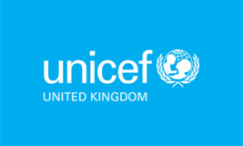

Last Updated - August 23, 2024
Skin to skin
However you plan to feed your baby, skin to skin after birth is a really good way for you to start to get to know each other. In the first few hours after birth, having uninterrupted skin to skin with your baby will help them to go through some important developmental stages.
Research has shown that skin to skin at birth with both parents is important. This is your opportunity to begin a bond with your child. Research studies have shown that even 30 minutes of skin-to-skin increases dopamine and oxytocin and lowers testosterone, ensuring that you will have an automatic positive association from close contact with their baby.
It’s not just for the first few hours though – whether you choose to breast or bottle feed, skin to skin has important functions for parent and baby throughout baby’s first year and beyond. Skin to skin contact whilst bottle feeding, enables a special bonding experience for you and your baby.
Skin to skin – i.e. baby stripped down to nappy and held against mum or dads bare chest, has been found to be very important for baby in:
- Regulating their heartbeat – calming them down and soothing them
- Regulating their temperature – skin to skin is an excellent way of keeping a baby nice and warm
- Regulating their breathing – again calming and settling them
- Encouraging feeding – skin to skin stimulates a baby’s natural urge to feed, whether breast or bottle fed
- Feeling safe, secure and close to their parent – with the smells, sounds and sensations they’re familiar with
- Reducing stress – releasing calming hormones and comforting them when they’re upset
- Being contented – a baby held and cuddled often tends to be more settled and less “clingy”, rather than becoming “spoilt” as some people fear
It’s also important for mother too, in that it:
- Regulates a mothers heartbeat and breathing
- Develops the relationship between mother and baby and increases a mothers resilience to cope with the challenges the early days can bring
- Encourages the release of hormones related to breastmilk supply and breastfeeding
- It has also been found to have some pain-relieving properties for mother too, as she focuses on her baby held close to her face
For dad and other family members:
- Skin to skin is good for other family members and baby too – calming them both, promoting bonding and giving other family members a really good way of comforting and soothing baby whilst mother rests
- Amazingly, skin to skin with people other than mother can still stimulate a baby’s natural urge to feed, whether breast or bottle fed
For more information about the value of skin to skin go to the Baby Friendly Initiative’s webpage, or ask your midwife
Carry on with skin-to-skin (baby can wear a nappy) when you get home; your baby is never too old for this! Skin-to-skin helps you and baby to feel calm and also aid with feeding through tuning-in to baby’s cues and increasing your milk supply. Your baby will be happier if you keep them near you and feed them whenever they are hungry. This will remind your body to produce plenty of milk. It is fine to feed your baby when they need comforting, when your breasts feel full or when you just want to sit down and have a rest. It is not possible to overfeed a breastfed baby. This is called responsive breastfeeding– feeds are not just for nutrition, but also for love, comfort and reassurance between both baby and mother.
Breastfeeding and early relationships
The skin to skin contact that breastfeeding naturally provides, enables a very special bonding experience for you and your baby. It will help to comfort you and your baby, helping baby to feel warm, calm and at ease. Being close to your baby also encourages your milk stimulation. Responsive feeding describes the sensitive, mutual nature of feeding when mother and baby respond to each other’s needs and cues. For example the mother can offer her breast if the baby appears unsettled or if the mother feels full and wants to sit down with her baby. Take a look at Unicef’s Baby Friendly video below
